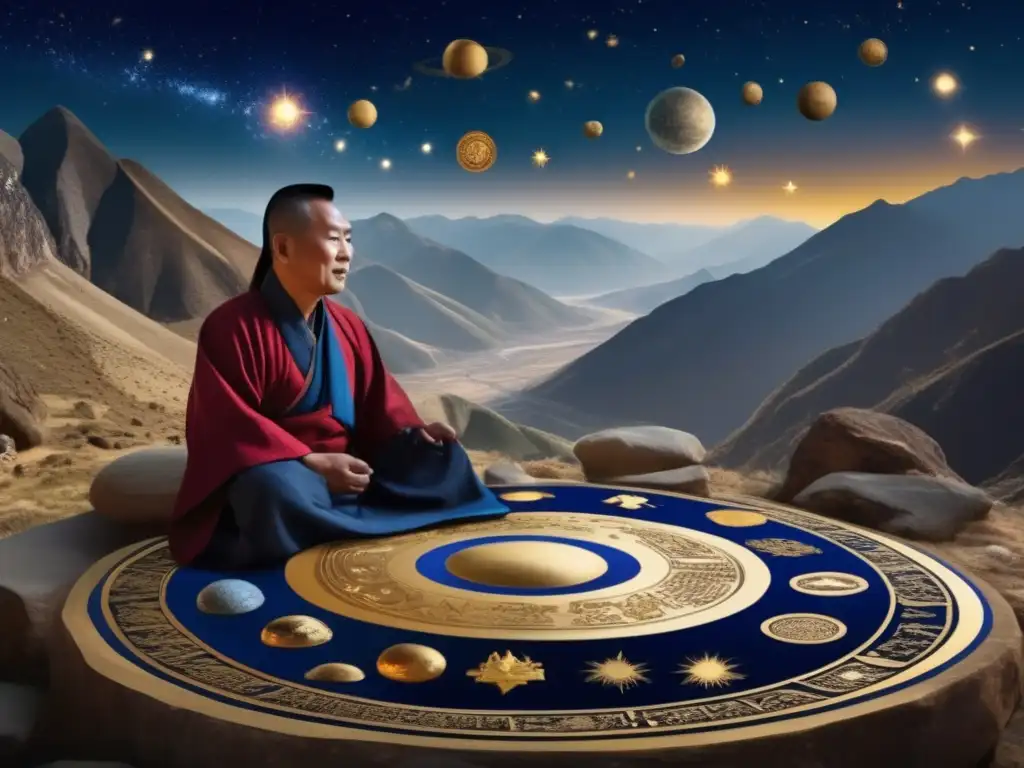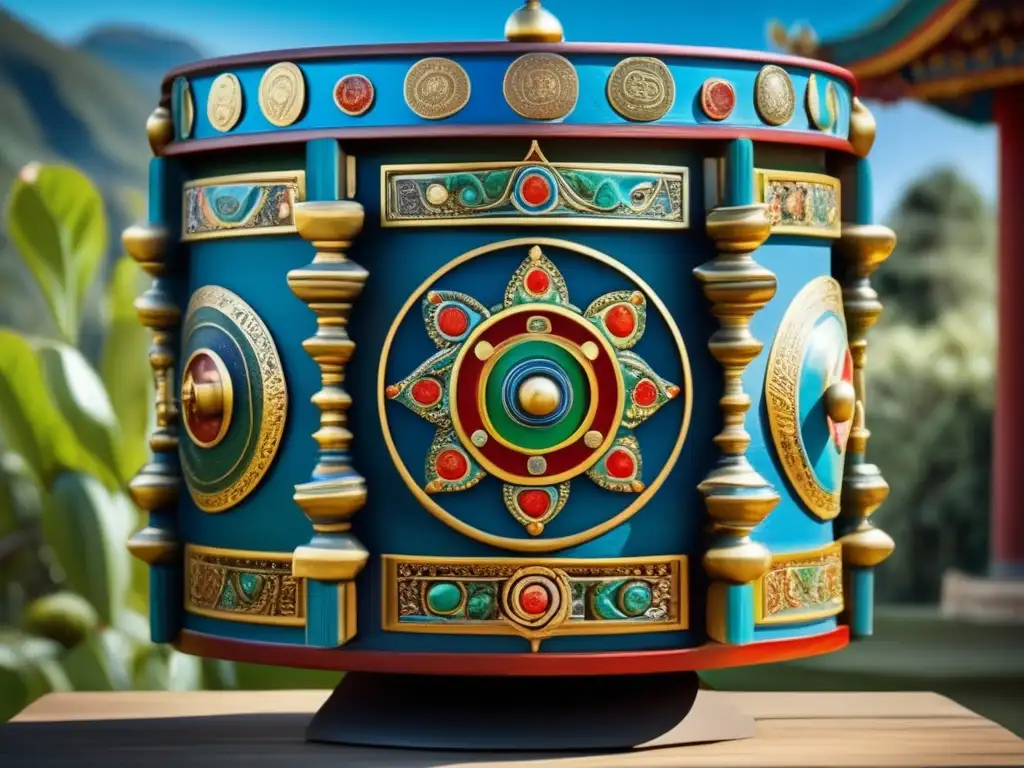Asteroids In Tibetan Buddhist Sutras: A Scholarly Perspective.

Introduction
The study of asteroids has spanned across many cultures and religions for centuries, each offering unique insights into the nature and significance of these celestial bodies. Tibetan Buddhism is one such religion that holds a vast body of knowledge in its sutras regarding asteroids and their impact on human life. This article aims to provide a scholarly perspective on the topic, deciphering the meaning behind the asteroid references in Tibetan Buddhist sutras and their significance.
The Concept of Asteroids in Tibetan Buddhist Sutras

Origins and Historical Context
The use of astronomical observations as tools for predicting and influencing events in the human realm is a long-standing tradition in Tibetan Buddhism, which is known for its rich astronomical literature. In many of the sutras, asteroids are mentioned as celestial bodies that have astrological and cosmological significance.
In Tibetan Buddhist cosmology, there are 36 celestial realms where beings can take rebirth and there are four types of celestial bodies: stars, planets, and comets, and asteroids. In this context, asteroids are seen as celestial signs related to the virtues of karma being done by sentient beings. These include both positive deeds such as kindness, compassion, and generosity, as well as negative ones such as hatred, greed, and harmful actions.
Interpretation of Asteroid References in the Sutras
One of the most well-known sutras in Tibetan Buddhism that makes mention of asteroids is the "Lankavatara Sutra." Here, the asteroid is referred to as a "stone that descends from the sky", which represents the karmic retribution of one's past negative actions.
Another sutra that mentions asteroids is the "Garuda Purana," which states that when an asteroid collides with the earth, it can cause widespread destruction. This implies that the path of asteroids plays a significant role in determining the destiny of human beings and their respective societies.
The "Tibetan Book of the Dead" also mentions asteroids as a symbol of the impermanence of all things. Here, the asteroid is regarded as a "messenger" that reminds one of the transience of life and the importance of cultivating positive karma.
Significance of Asteroids in Tibetan Buddhism
Asteroids have significant meaning in Tibetan Buddhism, where they are seen as symbols of individual karmic retribution. The study of asteroids and their impact on human life highlights the importance of responsibility and accountability for actions taken during one's lifetime.
Additionally, the concept of impermanence, which is central to this religion, is emphasized by the use of asteroids as reminders that all things are fleeting and subject to change. Therefore, the study of asteroids is essential for understanding the underlying philosophy of Tibetan Buddhism and how it relates to the nature of existence.
Mythological Interpretation of Asteroids in Tibetan Buddhism

Depiction in Art and Literature
Asteroids are depicted in various forms of art and literature in Tibetan Buddhism. For instance, the commonly used imagery of a deity holding a vajra represents the energy of a comet or asteroid. The vajra is seen as a powerful weapon capable of destroying obstacles, symbolizing the transformative power of asteroids on human life.
Another example of asteroid symbolism in art is the depiction of the goddess Vajrayogini holding an asteroid. This image represents the transformative power of asteroids in relation to spiritual development and enlightenment.
Interpretations of Terrestrial Events
Asteroids are also seen as powerful symbols that can provide insights into terrestrial events that have occurred or will occur. In Tibetan Buddhism, the trajectory and impact of asteroids are believed to influence human life, natural disasters, and various other global phenomena.
For instance, in the "Treasury of Astrology and Astronomy" by Karma Chagme, a renowned Tibetan Buddhist scholar, the occurrence of a major earthquake is believed to be a result of an asteroid collision with the earth. This interpretation of the event highlights the significance of asteroids in predicting and influencing natural phenomena and human lives.
Frequently Asked Questions

-
How do asteroids fit into Tibetan Buddhism?
Asteroids are seen as symbols of individual karmic retribution and reminders of the impermanence of all things in Tibetan Buddhism. They are depicted in various forms of art and literature and believed to influence natural phenomena and human lives.
-
What is the significance of asteroids in Tibetan Buddhism?
The study of asteroids highlights the importance of responsibility and accountability for actions taken during one's lifetime. Additionally, they are important for understanding the underlying philosophy of Tibetan Buddhism in relation to the nature of existence.
-
How are asteroids depicted in Tibetan art and literature?
Asteroids are depicted as vajras or powerful weapons capable of destroying obstacles. They are also seen as transformative symbols in relation to spiritual development and enlightenment.
-
What is the role of asteroids in predicting terrestrial events?
Asteroid trajectories and impacts are believed to influence natural disasters and various other global phenomena, according to Tibetan Buddhism. They are also used as symbols to provide insights into these events.
-
What is the "Lankavatara Sutra" in relation to asteroid mythology?
The "Lankavatara Sutra" mentions asteroids as "stones that descend from the sky," which represents the karmic retribution of one's past negative actions.
Conclusion
Asteroids have played a significant role in the mythology and philosophy of Tibetan Buddhism for centuries. The study of asteroids provides insights into the nature of existence and the importance of cultivating positive karma. Additionally, they are depicted in various forms of art and literature and provide insights into terrestrial events.
This article aimed to offer a scholarly perspective on the topic of asteroids in Tibetan Buddhist sutras, deciphering their meaning and significance. It is our hope that this article will encourage readers to explore further the fascinating intersection between religion, mythology, and astronomy.
Additional Resources

 The Myth Of The Phoenix: Asteroids As Symbols Of Rebirth
The Myth Of The Phoenix: Asteroids As Symbols Of Rebirth Angels And Asteroids: Unseen Links In Biblical Lore
Angels And Asteroids: Unseen Links In Biblical Lore Asteroids And Witchcraft: Legends From The Middle Ages
Asteroids And Witchcraft: Legends From The Middle AgesIf you want to discover more articles similar to Asteroids In Tibetan Buddhist Sutras: A Scholarly Perspective., you can visit the Asteroid Mythology category.
Leave a Reply

Articulos relacionados: